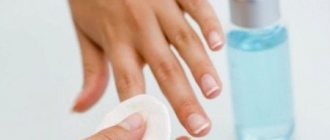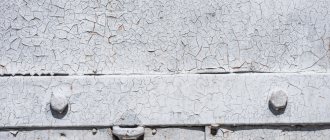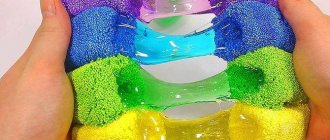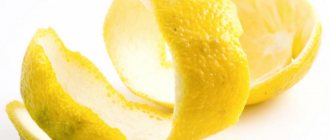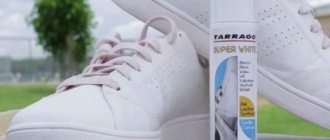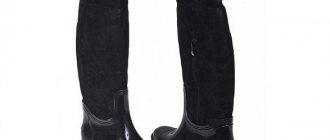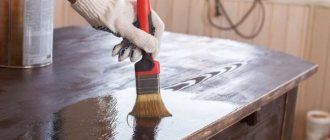Methods for cleaning outerwear
Items made from natural materials require more careful care, unlike clothes made from artificial fabric. Light cleaning is best done several times a week or as the product becomes dirty. This method will help to simply and effectively relieve jacket owners from the need to wash. To remove difficult stains, it is important to clean in this order:
- eliminating greasy stains on the surface of the jacket;
- removal of individual dirty areas;
- collar cleaning;
- tidying up sleeves and cuffs;
- washing the entire product.
Before washing the entire product, you need to carry out stain removal, as well as preventive care of individual parts of the leather jacket. The first thing to do after degreasing is to remove dirty areas on clothing. Stains on a jacket can vary in complexity. Each species has its own breeding method:
- Normal pollution. It can be removed with a wet piece of cloth or sponge. This is the easiest way to clean a white or dark leather jacket at home. If this method does not work, you can wet the brush with soapy water or a special stain remover.
- Fatty or oily area, traces of sweat. They are eliminated with alcohol or gasoline. In the latter option, the jacket will have to be washed to eliminate the specific smell.
- Ink. They can be easily removed with medical alcohol.
- Stains on the surface after rain or moisture. We remove them with table vinegar.
Soap solution for common stains
After removing ink, paint, and sweat stains from a leather jacket, the collar should be cleaned. This place gets dirty pretty quickly. If you do not wash it in a timely manner, difficulties may arise in the future. There are several methods for regular collar and lining care:
- if it is slightly soiled, you can clean it with a regular rag or sponge dipped in warm water - after this the area of clothing is dried or wiped with a napkin;
- cosmetic makeup remover milk also copes well with light and medium stains; it can be applied with a cotton pad;
- onion juice and orange peel cope with small and simple stains; after the procedure, the area should be washed;
- complex stains on a leather jacket need to be removed with medical alcohol or gasoline, and to eliminate the resulting odor, you need to wipe the treated area with citrus peel;
- Suede collars and linings are cleaned only with a rubberized brush with the hard side, and it is necessary to add a washing mixture consisting of salt, potato starch, talcum powder and tooth powder.
After the collar, you need to clean the sleeves and cuffs of the jacket from dirt. To do this, the product should be laid out on a flat surface and checked for any contamination. If found, stains should be removed.
After cleaning a light leather jacket, it is given a little shine. To do this, you need to make a solution that consists of ammonia and warm water in a ratio of ½ and use a soft sponge to wipe the sleeves and cuffs. After completing the procedure, you should soak the clothing covering with glycerin or colorless cream.
For light stains, clean with a regular rag or sponge soaked in warm water. Cosmetic makeup remover milk copes with light and medium stains. Onion juice and orange peel cope with small stains. Remove difficult stains with medical alcohol or gasoline. Suede products are cleaned with a mixture of salt, starch, talcum powder and toothpaste. powder
Wash
Machine washing of clothes made of genuine leather is not recommended, since this procedure can harm the appearance and structure of the product. However, if you follow the rules, the quality of cleaning your leather jacket will increase significantly. When machine washing, remember the following recommendations:
- washing is carried out only in delicate mode;
- if the required mode is not available, then a program for wool products is suitable;
- the water temperature should be no more than 30 °C;
- in order not to damage clothes, it is recommended to set the spin cycle to 300-600 rpm;
- Instead of washing powder, it is better to use liquid soap - it is gentler on natural leather.
As soon as the jacket is completely dry after washing, you need to saturate the surface with glycerin or a special colorless cream for natural leather. Next, you should thoroughly wrinkle the clothes. This allows you not to think for a long time about how to remove stains from a leather jacket. Washing is carried out in a delicate mode. The water temperature should be no more than 30 °C. Spin at 300-600 rpm. Use liquid detergent.
At home, you can use various available means to solve the problem. When deciding how to remove paint from a Bolognese jacket, they are guided by the complexity of the stain and the type of paint. You will have to spend much more time on old stains than on fresh ones. If traditional methods do not bring the desired effect, you should use dry cleaning services. To extend the life of your outerwear, you need to know how to remove paint from a jacket.
Solvents
This group includes substances that can be used to remove both water-soluble and oil stains. The procedure is quite simple:
- The item is laid out on a flat horizontal surface.
- A fabric that has absorbent properties is placed on the reverse side.
- A napkin and cotton pad are moistened with a pre-prepared solvent.
- Wash the affected area.
- Wipe it with a clean damp cloth.
White Spirit
This composition is used to remove contaminants caused by alkyd and oil paints. White spirit works well on the toughest stains. The advantages include the absence of an unpleasant odor and gentle action.
When using petroleum products, safety precautions must be observed. This is due to their aggressiveness. Only purified formulations should be used as active ingredients. The area stained with paint is cleaned with a cotton swab. It is pre-moistened in the prepared mixture. After treatment, outerwear should be washed in the usual way. Such solvents are characterized by high efficiency. They are used to remove fresh and old contaminants.
Medical alcohol
This component removes stains on jackets made from synthetic fabric (Bologna, polyester). Processing occurs according to a standard algorithm. First, the absorbent wipe is moistened with medical alcohol. The second stage is cleansing, the third is rinsing the affected area with clean water.
Laundry soap
This is a universal component. It is used both individually and in combination with other cleaning substances. These include vinegar and starch. The first stage is the treatment of contaminants with a soap solution. The temperature of the liquid is determined based on the tissue. The next step is to soak the affected area with warm alcohol.
Concentrated gels work well to remove stains caused by water-soluble paint. Before starting the procedure, you will have to wipe off the top layer of the stain. This can be done with a knife. Then the dirt is washed off using a solution of water and dish soap. It is applied using a small sponge. When the stain disappears, a special conditioner is applied to the jacket. This way you can clean leather products.
Vegetable oil
It is used to remove stains from a Bolognese jacket. To achieve a positive result, you must follow a certain algorithm:
- Soak a cotton pad in vegetable oil.
- Wipe the dirt until it disappears.
- Treat the damaged fabric with a clean damp cloth.
Crushed table salt is used together with warm alcohol. The latter is used for initial processing. Removing the first layer of paint is followed by cleaning with a saline solution. After cleaning is completed, the damaged item of clothing should be rinsed. The only downside is the unpleasant smell. It is strictly forbidden to interrupt it with perfume compositions.
We suggest you read How to reduce the size of a jacket at home
How to remove paint from a leather jacket?
The material used for making jackets is different. Accordingly, the means for each are selected. The only thing that works with any material has in common is testing the product on an identical piece of material. This is done to avoid damage to the item. Now start removing the stain.
To remove paint from a jacket if it is made of leather, there are three cleaning methods.
Method No. 1
A product with an identical base – vegetable oil – is perfect for removing stains. There are step-by-step instructions for using it:
- Take a cotton swab or pad.
- Moisten it with any vegetable oil.
- Wipe the stain until it is clean or the cotton is dirty.
- Change the cotton wool if necessary.
- At the end of the procedure, wipe the area to be cleaned.
Method No. 2
The solvent will effectively and quickly help remove paint from your jacket, regardless of what it is made of. When using the product, follow these step-by-step instructions:
- Place the item on a horizontal, flat surface.
- Place an absorbent cloth on the back of the product.
- Soak a cotton pad with the solvent you have on hand.
- Apply to the damaged area for several hours.
- Remove the “lotion” and wipe the cleaned area with a damp cloth.
Important! If the material has become rough after processing, use one of the remedies suggested in our separate article to.
Method No. 3
Dishwashing liquid not only does a good job of removing grease on your plates, but will also help you remove paint from your leather jacket. To do this, proceed as follows:
- Use a knife to scrape off the dried paint surface.
- Prepare a strong soap solution from dish soap and water.
- Lather well.
- Using a sponge, remove the foam and wipe the damaged area.
- Rinse the paint-contaminated sponge with running water and repeat the procedure.
Important! Once the paint is completely clean, dry the area and apply leather conditioner.
These simple methods will help you remove paint from a leather jacket.
How to remove a fresh stain?
Cleaning up a fresh blot is not difficult if you act quickly. The cleaning method depends on the type of paint:
alkyd - blot with a napkin with nail polish remover, acetone, lighter gasoline or any other solvent that is at hand;- oil - wash the damaged area with cold water and laundry soap or Fairy;
- water-based - treat the fabric with a cloth soaked in water or alcohol, clean with a soft brush;
- watercolor - rinse the painted area under running water, wash with any powder or laundry soap;
- stamp (mastic, ink) - cover the blot with salt, starch, baking soda until completely absorbed (until the substance stops coloring), then treat the stain with hot water, wash.
When removing a fresh stain:
- Do not rub or smudge the paint. So the area of damage will be much larger.
- The blot needs to be carefully blotted with a napkin or removed from the edges to the center.
- When using solvents, gasoline, or turpentine, first make a test in an inconspicuous area.
Immediately after detecting drops of paint, you need to take off your clothes and try to remove the contamination with a damp cloth or wash the area with cool water (not ice!). If stains remain, use solvents, improvised means, or ready-made stain removers.
Removing old stains
You can remove old paint from a jacket using the following procedure:
- Soak the item for 2 hours. Add a cleaning agent to the water: vegetable oil, alcohol or another substance (the choice depends on the type of fabric).
- Take out the clothes and apply the cleaning product directly to the stained area. At this stage, you can use harsher solvents: acetone, white spirit, gasoline.
- Scrub the stain with a toothbrush or shoe brush (depending on the area of the stain).
- Wash your clothes by hand. When washing, pay attention to the location of the stain.
To remove paint from a leather jacket, use a soft-bristled brush. Horsehair is best. For suede, use a rubber or nylon brush. A down jacket made of synthetic fabric can be washed with a regular sponge.
White Spirit
This solvent can be purchased at any hardware store. It perfectly removes all types of paints: oil, alkyd, acrylic. White spirit does not affect the color or strength of the fabric.
How to remove paint from a jacket with white spirit:
- Place the clothing on a flat surface.
- Place paper towels under the stained area.
- Soak a cotton pad with white spirit.
- Place the disc on the stained area for 10-15 minutes.
- Soak a cotton swab with solvent.
- Carefully remove any remaining dye.
- Wash your clothes with conditioner.
The only drawback of white spirit is its strong, unpleasant odor. After finishing working with the solvent, thoroughly ventilate the room.
Gasoline, turpentine, kerosene
These substances perfectly remove fresh and old paint stains. Apply a little gasoline, kerosene or turpentine to the dirt. Wait 10 minutes for the solvent to take effect. Remove any remaining stain with a cotton pad or soft-bristle brush.
Features of cleansing depending on color
White Spirit
When starting to remove stains, you need to take into account the type of fabric from which the outerwear is made.
Fresh drops needed:
- Blot with a paper napkin.
- Rub the damaged area with laundry soap or Fairy.
It's better to use a toothbrush. The bristles will help remove traces of pigment from the pores or natural folds of the material. - Remove any remaining foam with a damp cloth.
To erase dried stains you will need a solvent, oil or alcohol. Hot water or steam cannot be used.
Bologna
The measures depend on how long ago the item was soiled:
- You can try to wash off the drops that have just splashed with a strong stream of running water;
- fresh marks - treat with warmed medical alcohol, vodka or ammonia;
- dried - with turpentine, kerosene or acetone.
After cleaning, clothes must be washed in a washing machine or by hand with powder and fabric softener to remove unpleasant odors and stains from solvents.
Polyester
Any means that corrode color pigments is safe for artificial materials.
If a stain is detected, you need to:
- Remove the top layer with salt, baking soda, or scrape off with a knife or blade.
- Wash the damaged area with soap or Fairy.
- Blot the dye absorbed into the fabric with a napkin containing solvent, gasoline, or acetone.
Dried stains from oil paint should be softened with alcohol lotion before washing.
When choosing how to remove paint, you need to take into account not only the type, but also the color of the fabric.
When processing such clothing, care must be taken, because... Solvents, benzene, or turpentine may leave yellow or gray streaks.
To remove colored droplets, it is recommended to use ammonia, heated alcohol or hydrogen peroxide. A blot from stamp paint, watercolor paint, or gouache can be sprinkled with baking soda, salt, or crushed chalk.
If this does not help, mild chlorine or optical brighteners are acceptable. At the same time, you should not wash a white down jacket in “Whiteness”. The fabric will quickly turn yellow.
Black
To clean dark material, purified gasoline, turpentine or acetone are suitable. Fresh stains can be removed with laundry soap.
Bleach, baking soda, alcohol or solvents will leave bleached areas and should not be used.
It will be easier to remove paint from a jacket if you know a few important nuances:
- Fabric type. Depending on what material needs to be removed from the paint, the substance used for this depends. Do not use aggressive solvents on leather and delicate items, and do not use fat-containing products on Bolognese items.
- Type of paint. If you know in advance what type of dye the clothes were stained with, it will be easier to wipe off the stain. Gouache and similar water-based pigments can be removed with regular soap, but oil-based or alkyd pigments will have to be cleaned with more aggressive agents.
- Pollution time. The sooner you start scrubbing away paint stains on jackets, the greater the chance of removing it without damaging the product.
Not all types of jackets can be machine washed, and sometimes even hand washed. Therefore, most often it is necessary to remove persistent stains by applying a targeted effect to the stain.
Removing paint from a bologna jacket is not that difficult. Liquids, being absorbed into the inside of the product, usually do not dry out for a long time. A stain that has not yet dried can be wiped off with regular alcohol.
To do this you need:
- Soak a cotton pad in medical ethyl alcohol (for minor stains, you can use vodka).
- Treat the stained area, being careful not to pour alcohol into the product.
- Repeat the procedure with a clean swab.
Wash the jacket or wipe the stain with a clean rag.
If there are traces of water-soluble paint left on the Bolognese product, they can be removed with laundry soap. To do this, you need to either wash the jacket with soap, or apply a soap solution to the problem area and wipe off the dirt with a damp sponge.
Removing paint from a leather jacket is a little more difficult, as there is a risk of ruining the item of clothing. If you find a fresh stain, you can wipe it off with a cotton pad soaked in vegetable oil. For high-quality cleaning, the sponge should be replaced with a clean one when it becomes dirty. The trace of oil is removed with a soap solution. The carefully processed product is dried naturally.
Solvent will help remove dried stains. But it must be used extremely carefully, since leather or leatherette can quickly become unusable. Experts advise carrying out a preliminary test on an inconspicuous area of the product, and only then treating the main damaged surface.
Attention! A leather product should not be rubbed too hard, so as not to damage the surface structure and wash off the color palette.
You can remove paint from a down jacket using various means, starting with simple vegetable oil and ending with an effective solvent. In this case, it is necessary to take into account the type of paint and the fact that acetone or white spirit can corrode the fabric of the down jacket. Therefore, it is better to start scrubbing the stain with more gentle means and only if necessary move on to aggressive compounds.
Leather products do not have a wide range of colors, but when cleaning, you should carefully select the products as they can negatively affect the appearance of the jacket. There are 3 main variations of outerwear shades:
- Light products. For them, it is recommended to clean your leather jacket at home or take the items to professionals. You can remove stains from beige or white items with beaten egg whites. Using the resulting foam, the surface of the product is treated, after which the item is washed under running water and wiped dry. A white jacket can also be cleaned with nail polish remover, but it is best to use it only as a last resort.
- Things are brown and red. To clean a genuine leather jacket of this shade, you need to use half an onion or a soap solution. It is not advisable to use gasoline to remove stains, as it may leave dirt behind.
- Jackets in dark colors. The most unpretentious products that can be treated with any cleaning agent. The only exception can be a solution of water and chalk in a ratio of ½, since after such treatment white stains and stains remain on the surface.
It is not recommended to use cleaners made from citrus peels as they give the light coating a yellow tint that is difficult to remove. Professional compositions for caring for jackets include creams, sprays, conditioners, shampoos, and wipes. For maximum results, any product must first be tested on an inconspicuous area.
What is the safest way to remove old stains?
Paints are made from various materials. Each of them differs in drying speed, color intensity, and purpose. Considering the included components, the compositions are divided into two categories. The first includes water-based mixtures, the second - oil-based. To get rid of stains, you need to determine their complexity.
We suggest you familiarize yourself with How to beautifully fold paper napkins on a holiday table. Schemes, instructions, photos
Fresh stains caused by watercolors, emulsions, tempera and gouache can be removed with plain water. To remove old stains, you can use laundry detergent and laundry soap. If oil paint gets on leather jackets, down jackets and windbreakers, you will have to put in more effort, although the list of available tools is quite extensive.
The choice of solvent for removing paint from outerwear depends on the complexity of the stain, its size, type of material, and type of contamination.
White Spirit
The solvent copes well with blots from any type of paint (oil, alkyd, acrylic). It is safe for fabric materials and does not discolor the design.
To remove a stain:
- The jacket must be placed on a flat, hard surface. Place a clean napkin under the damaged area on the wrong side.
- Apply a little solvent to a cotton swab.
- Gently wipe off the paint, trying not to go beyond the boundaries of the stain.
To speed up the cleansing process, you can first place a cotton pad soaked in white spirit on the stain for 10–15 minutes.
After treatment, the jacket should be washed in the usual way with the addition of fabric softener. Similarly, you can use nail polish remover or regular acetone.
Effective in removing fresh or dried stains.
The instructions are as follows:
- a little product should be applied to the blot;
- leave for 10 minutes to soak the paint;
- Wipe off with a cotton pad or soft brush.
To remove complex, old stains, use a mixture of gasoline, kerosene and turpentine in equal quantities. Using a napkin soaked in a reinforced composition, blot the damaged area until the stains are completely removed.
Only purified substances can be used. They are safe for fabric and do not leave streaks.
Medical alcohol
An undiluted product can easily clean a jacket made of synthetic material or leather.
The algorithm of actions is standard:
- Place a cloth soaked in alcohol on the stain and leave for 15 minutes.
- Clean.
- Rinse the area with running water. Wash clothes completely.
Alcohol removes fresh marks well. It doesn't cope well with dried stains, especially on jackets made from natural materials.
Warm alcohol can be used in the first stage of comprehensive cleansing. It softens the base of coloring compounds and helps solvents or other means remove stains from the jacket.
Thick foam will help remove traces of water-based emulsion from any type of outerwear:
- The damaged area should be thickly soaped with laundry soap.
- Leave for half an hour.
- Launder. Use a brush to gently clean the painted areas.
- Rinse. Wash as usual.
The soap is safe for any outerwear, does not discolor, and does not leave streaks.
To clean heavily soiled jackets that are not afraid of exposure to very high temperatures, you can use a mixture of soap shavings, baking soda and hot water (5 tablespoons per 1 liter):
- clothes in a soap-soda mixture must be boiled for 15 minutes;
- leave to soak until cool;
- brush;
- rinse, wash in washing machine.
Fairy can be used as an express product for quickly removing fresh drops from oil, water-based, acrylic, and watercolor paint.
A little remedy:
- Apply to fabric using a toothbrush;
- rub gently;
- wash clothes with added fabric softener.
To remove water-based paint from a leather jacket:
- The top layer of the blot must be carefully removed with a knife or blade.
- Foam 1 tbsp in 200 ml of water. l. Fairy.
- Using a sponge, apply thick foam to the painted area.
- When the mark disappears, wipe the skin dry. Apply any softening cream (cosmetic hand cream, children's cream, special shoe cream).
As the coloring composition dries, the effectiveness of the product decreases. It will not be able to remove old drops from oil or acrylic paint.
Suitable for removing fresh stains from bolognese or leather jackets:
- Apply a little sunflower oil to a cotton swab or soft napkin.
- Treat the stained area, periodically replacing the cotton wool with fresh one, until the stain disappears.
- Wipe with a clean cloth moistened with warm water. Dry. You can apply a special coloring cream selected by color or shoe wax to a leather product. Fabric jacket - wash.
If the paint has already dried, you can use baking soda to enhance the effect:
- prepare a thick paste (for 1 tbsp. oil you need about 3 tbsp. soda);
- apply to the stain, leave for 15 minutes;
- clean with a brush, rinse with warm water.
Oil should not be used for jackets made from natural fabrics.
Selecting a Paint Remover
When choosing a method for cleaning a jacket from dirt, it is necessary to take into account the composition of the dye. Paints can be:
- oil;
- water based.
If your jacket is dirty from water-based paint - for example, from watercolor paint or gouache - then plain water will help. If the marks are fresh, you need to moisten a napkin or sponge with water and rub the affected area. To remove an old stain, you can wash the damaged area on the jacket using laundry soap or a washing powder suitable for the type of fabric.
Getting rid of oil paint stains, especially old ones, is much more difficult. You can remove such contaminants using:
Additionally, you will need rags or cotton pads, pieces of sponge, and a knife.
How to get rid of greasy
In addition to stains, jackets also have to be cleaned of grease. The following parts of the jacket are often susceptible to such contamination:
- collar lining;
- inner and outer parts of the sleeves;
- pocket area.
Recommendations on how to clean a leather jacket from grease:
- Wipe the area on clothing with a cotton pad or soft sponge soaked in medical alcohol.
- Treat the area with lemon juice or citrus peel.
- Moisten the surface of the product with glycerin and thoroughly knead the jacket.
Wearing a scarf or wiping the area weekly with a sponge soaked in detergent will prevent the collar lining from becoming greasy. It is also recommended to use water-repellent sprays and caring creams more often. To remove stains at any time, you should purchase a ready-made set of products and know how to clean a leather jacket at home. Wipe with a cotton pad soaked in medical alcohol. Treat the area with lemon juice. Moisten the surface of the product with glycerin. Knead the jacket thoroughly.
Cakes, candies and Easter eggs
Multi-colored spots can be the result not only of classes in art school, but also as a consequence of eating sweets and other foods. They can easily be eliminated at home by washing. If this method does not help, then you can use the methods used to remove hair dye stains.
Beautiful, clean, well-groomed clothes are the calling card of a successful person. And even if your trousers or blouse have suffered from paint stains, this is not a reason to be upset, because knowing proven effective methods, it is possible to remove them. In such a complex task as cleaning clothes from stains, you need to arm yourself with patience and recipes for preparing cleaning mixtures.
Mother of two children. I have been housekeeping for more than 7 years - this is my main job. I like to experiment, I constantly try different means, methods, techniques that can make our life easier, more modern, more fulfilling. I love my family.
Sooner or later, almost all of us are faced with the problem of complex stains appearing on our clothes. If a knitted T-shirt or beach shorts can still be safely transferred to the category of things for the home or garden, then with outerwear the situation is more complicated. Not everyone can afford to throw away this wardrobe item. Dye is one of the most serious problems on clothing.
How can you clean it at home?
Each material has its own properties, so different methods are used to cleanse contaminants. In addition to the main ingredients, you will need cotton pads and cotton napkins. The procedure is carried out until the stain disappears.
The following types of paint are distinguished:
- Alkyd - dirt is removed using white spirit. This solvent is applied to the contamination using a gauze pad. Movements are directed from the edges to the center. During the procedure, absorbent wipes are placed under the stain. Instead of the active composition, you can use turpentine or gasoline.
- Water-based - damaged fabric is cleaned with cold water. The next step is to wash the jacket using dishwashing detergent and laundry soap.
- Watercolor - for the procedure you will need a toothbrush, water, washing powder and bleach.
Before removing the stain, the product must be turned inside out. The list of available means is supplemented with ammonia, vinegar and salt. Stamp ink - Stamp - this composition is often called mastic. It's quite difficult to get rid of it. This substance quickly enters both the skin and tissue. Hot water is often used to remove fresh dirt. Thanks to it, the ink is quickly washed out. The same effect can be obtained by using napkins soaked in an alcohol solution.
- Oily – provokes the appearance of the most difficult stains. They are removed using liquid soap and cold water, and a cotton pad soaked in turpentine. Grease stains that occur when paint gets on the jacket are removed by heating. Cover the stained area with a napkin and iron it with a hot iron. As a result, the dye is quickly absorbed into the fabric or paper.
Jackets can be made from different materials. To prevent a decrease in quality, the prepared product must be tested in an inconspicuous area. During the procedure, it is recommended to follow the following rules:
- Before removing the paint from the jacket, the product needs to be prepared.
- Laundry soap should be used before the paint stain has dried.
- At the last stage, the jacket should be treated with special means. When choosing a suitable composition, they are guided by the color of the product.
- To remove complex contaminants, safe products are first used. If there is no positive effect, aggressive compounds are used.
- If the stain has already dried, you will have to soften it before cleaning.
- Many substances that can help with paint stains are fire hazards. Therefore, they must be stored away from sources of fire and out of the reach of children.
If the paint has managed to get into the fibers, the chances of complete restoration of the fabric are quite small. In this case, the time spent will not be worth it. To avoid such problems, you must follow the recommendations on how to remove paint from a bologna, leather or synthetic jacket.
It is recommended to wipe off dyes using the following available means:
- oil and alcohol;
- nail polish remover;
- baking soda with dishwashing liquid;
- scrub;
- vinegar;
- kefir;
- toothpaste.
We suggest you read everything about how to properly store chicken eggs and is it possible to wash them before?
These products are non-aggressive, unlike solvents, which are most often used to remove dyes from clothes.
It is recommended to first try to scrub off any types of substances with soap and water. Many substances are washed off well with a soap solution. After treating the skin with it, you can move on to mineral oil. It is considered an excellent cleanser.
Mineral oils are good for removing water-based and oil-based stains. They also remove latex paint quite well.
It is recommended to use sunflower or linseed oil. Olive is also suitable. You can use Johnson's baby oil.
To remove a dye stain, you must:
Generously moisten the area where there is a trace of paint with oil.- Rub in the mixture thoroughly.
- Wait until the oil is well absorbed. 3 minutes is enough.
- Rub the stain vigorously with a stiff washcloth.
- Additionally, treat any remaining paint marks with an alcohol solution.
- Wash your hands with soap.
The alcohol solution greatly dries out the skin. Due to its irritating effect, they may begin to peel off. To avoid this, after treating the skin with alcohol, rub a moisturizer into it.
This product is a good solvent. A component of such liquids is acetone. It is often used as a solvent.
It is necessary to soak a cotton pad in nail polish remover and carefully wipe the paint stain on the skin with it. You can repeat the procedure several more times. After treatment, wash the skin thoroughly with soap.
Nail polish remover should not be used to remove paint stains on the face. Acetone can cause severe eye irritation. The product is best used for washing dyes from hands.
Baking soda is a good cleaning agent. Dishwashing liquids contain surfactants and glycerin, which have good cleaning properties. It is recommended to use the products together.
- Mix a large spoonful of liquid with a small spoonful of baking soda.
- Mix the ingredients.
- Thoroughly rub the resulting soap foam into the stain.
- Wash off the mixture from the skin with warm water.
To enhance the effect of the combination of these products, it is recommended to add a small spoon of lemon juice to them.
The components of body scrubs are abrasive particles. They are good at scrubbing away impurities on the skin. Abrasive particles also penetrate well into contaminants, which is why scrubs can be used to remove dyes from the skin.
It is necessary to apply the scrub to the dirt and thoroughly rub it into the skin. Then the product is washed off with warm water.
This product contains acetic acid. It acts as a good solvent. It is enough to soak a cotton pad in vinegar and wipe the paint mark with it. Then you need to wash the treated area with warm water and soap.
Vinegar should not be applied to the face; the acid can cause burns. It is especially dangerous for mucous membranes and eyes.
This product includes many abrasive particles. Compounds such as silicon and titanium dioxides and aluminosilicate actively remove contaminants.
Thanks to this composition, toothpaste can be used to remove paint from the skin. Whitening pastes that contain silicon hydroxide cope especially well with this.
It is recommended to use the product in combination with soda according to the following scheme:
- Apply a little paste to the stain. Distribute it evenly.
- Apply baking soda to the area treated with the paste. Wait 5 minutes.
- Rub the mixture into the skin with quick movements.
- Rinse the treated area with warm water.
It will be necessary to repeat the procedure if the stain still remains on the skin.
Due to the presence of acetic acid bacteria, alcohol and carbon dioxide in it, this fermented milk drink can be used to remove dyes from the skin. Kefir is especially good for scrubbing off hair dye stains.
It is necessary to moisten a cotton pad in any kefir and rub the drink into the area of contamination. You need to wait 10 minutes for the kefir to be well absorbed. Then the mass is washed off with warm water.
Removal nuances depending on the type of dye
Hair dye is best wiped off the skin with alcohol-containing solutions. Special lotions and facial tonics are suitable for this.
An alternative could be vodka. You can use medical alcohol, but not too concentrated. It must be diluted with water.
Hair dyes are also easily removed from the skin:
- lemon juice;
- olive oil;
- vinegar;
- hydrogen peroxide.
The last two products should not be applied to the face. It is better to use peroxide to remove paint from your hands or feet. It is enough to moisten a cotton swab in it and wipe the dirt with it.
There are special removers. They are designed to remove hair dye marks from the skin. These are products under the brands “Estelle”, “Kapous”, “Wella”, “Galacticos Professional”.
Other types of paints have the following removal nuances:
- Oil paint is best wiped off with strong solvents. White spirit and turpentine are more suitable. You can use gasoline or acetone to cleanse the skin on your hands and feet. Such solvents can provoke allergic reactions. Therefore, they cannot be applied to the face. You can wipe off fresh oil paint from your face with olive oil.
- Fresh acrylic paint is quite easily washed off the skin with warm soapy water. Dried paint is pre-soaked with warm water for 20 minutes. Then it should be scrubbed with pumice. It is better to use its fine-grained version.
- Water-based paint is easily washed off from the skin with a solution based on laundry soap. Ink should be scrubbed with scrubs and hydrogen peroxide. For cleaning, it is recommended to use a pumice stone or a toothbrush.
Vinegar essence
Do not confuse vinegar essence with table solution (food vinegar). Their difference lies in the maximum concentration: in the first case the figure is 65-70%, in the second - a maximum of 9%. Not many people know that the product is used in enterprises to add brightness to the shade and improve the structure of the fabric. For this reason, vinegar essence can be used in reasonable quantities on fabrics of all types and colors.
To prepare a soaking solution, mix 75 ml. essences with 3.3 l. filtered water, place clothes in the basin, wait about 1-1.5 hours. After the specified time, send the clothes to the machine. In cases with minor stains, treat paint marks locally.
It is not difficult to get rid of traces of paint on clothes if you have sufficient knowledge regarding available folk remedies. Consider a recipe for preparing a solution based on kefir and sodium borate, turpentine, hydrogen peroxide or Chlorhexidine. Rub the stain with butter, use chlorine, ammonia or table vinegar.
What to do if the type of dye is unknown?
It is not always possible to determine which dye stain remains on the jacket.
In this case, you should first try safe cleansing methods:
Carefully remove the drop with a hard tool (knife, scissors, nail file) before it dries.
You need to act carefully, collecting paint from the edge to the center, trying not to damage the material.- Wash the stained area with cool water and laundry soap or dish soap.
- Use a stain remover for colored or white laundry, depending on the color of the jacket.
You shouldn’t try to clean expensive jackets made from capricious material yourself. It would be safer to go to a dry cleaner and entrust paint removal to professionals.
Secrets of neat cleaning
You can wipe the paint off the jacket without putting too much pressure on the fabric. The harder you apply pressure to the brush, the deeper the paint penetrates into the fibers. Use smooth sliding movements to clean. Excessive pressure may cause color loss or holes in the fabric. Rub the stain from the edges to the center. By moving the brush from the center to the edges, you increase the area of contamination.
Do not use boiling water for soaking, cleaning and washing. Most fabrics used to make outerwear lose their shape at high temperatures.
When working with any solvents, wear household gloves to protect your hands. After working with strong-smelling substances, be sure to ventilate the room.
Recommendations and prohibitions
To effectively wipe off any type of dye from the skin, the following must be considered:
you need to try to remove the mark as quickly as possible before the dye dries;- Do not etch paint stains on your face with solvents;
- it is necessary to wipe off dried traces of oil paint on hands and feet with solvents;
- before removing dried paint from the skin, you must first soften it with warm water for 10-20 minutes;
- It is recommended to wipe off any fresh paint with warm soapy water;
- You should use pumice stone and a toothbrush when scrubbing away dyes.
After any treatment of the skin with various means, it is necessary to wash it thoroughly with warm water and soap, and then use a moisturizer. It will soften the skin and prevent irritation from occurring on it.
Patience and following the recommendations will help you remove dye from outer clothing:
- Work with solvents must be carried out with the window open and using protective equipment. This will avoid poisoning by vapors of acetone and similar liquids.
- Any product must first be applied to an inconspicuous area of the product. If the reaction is negative, you should choose a different cleaning method.
- Fresh dirt can be removed faster than dirt that has already dried. Therefore, if a dye gets on the fabric, you should not hesitate to save it: you must quickly wash the stain with oil or gasoline. Traces of these products can be removed later.
Rules for removing ink stains
To return a dirty item to its original appearance, regardless of the material, you should adhere to certain rules:
- The ink removal process should begin as soon as possible after the stain appears. Fresh marks can be cleaned up faster and you can use gentle products
- It is recommended to remove other dirt or dust from the jacket; if there are no visible traces of dirt, just shake the item a couple of times
- If the jacket contains predominantly synthetic fabrics, under no circumstances should you use acetone or other solvents to remove stains from it.
- The chosen product, even the most harmless one, is best tested on the back of the item; such a check will make sure that the fabric will not change color and the design will not be erased (if present)
- To prevent the stain from growing, it should be moistened with cold water and it is also recommended to start cleaning from the edges
- It is better to stick to one cleaning product rather than combining several stain removers with different properties.
- Do not use hot water when cleaning or subsequent washing an item that has not been completely cleaned; it will only promote deeper penetration of contamination.


